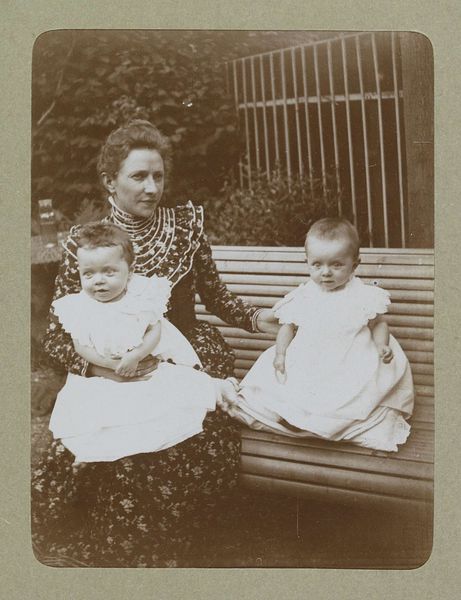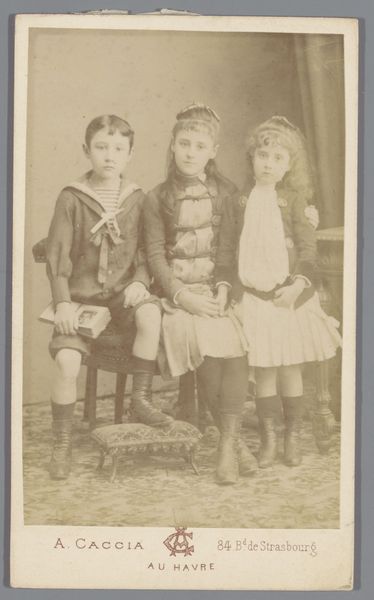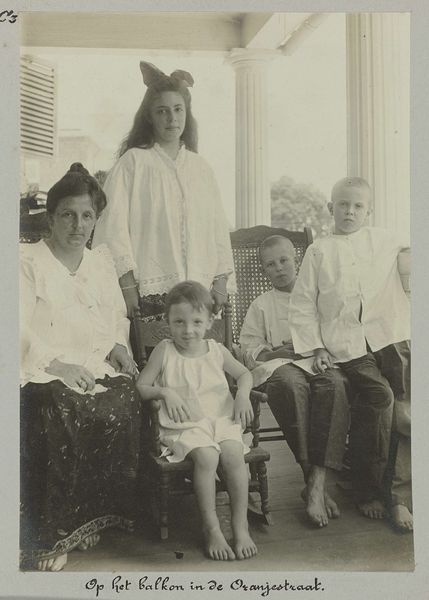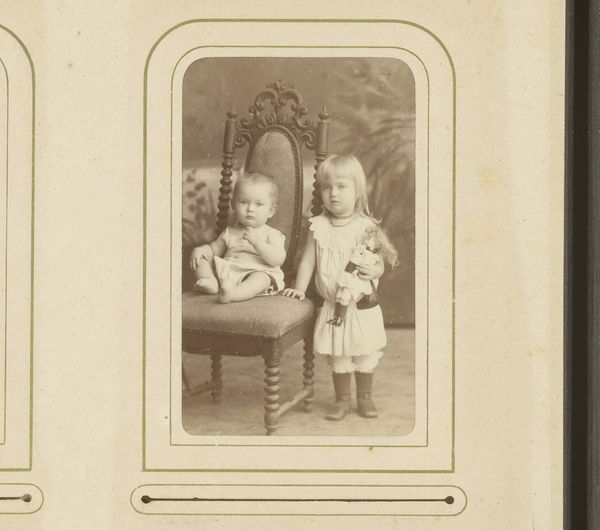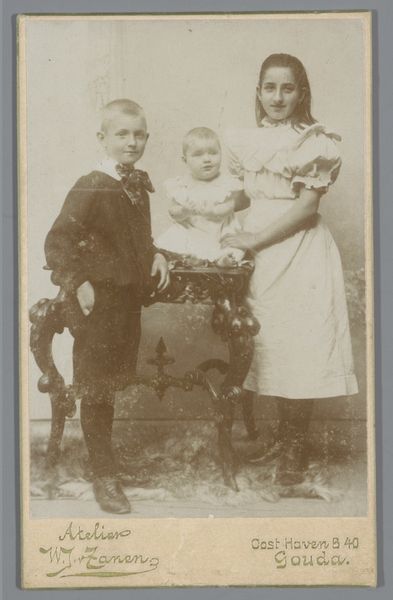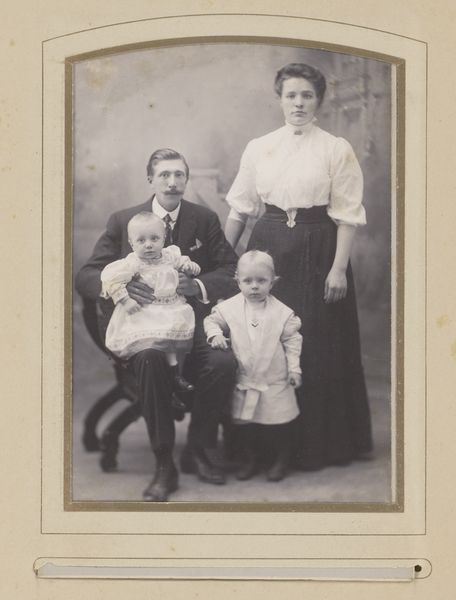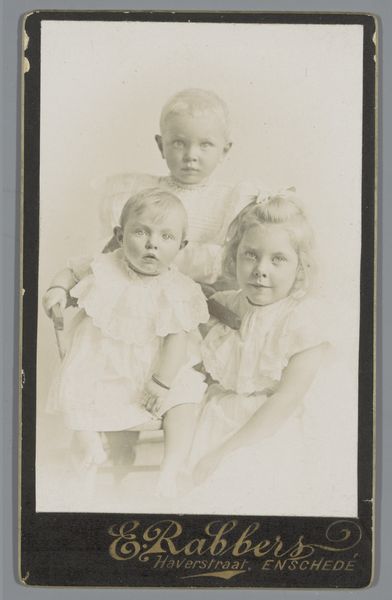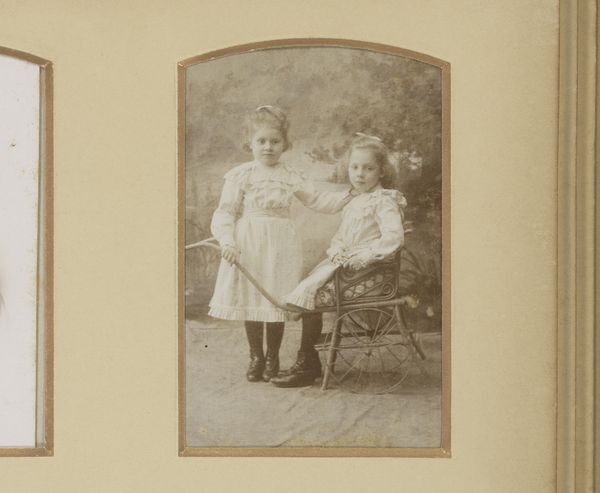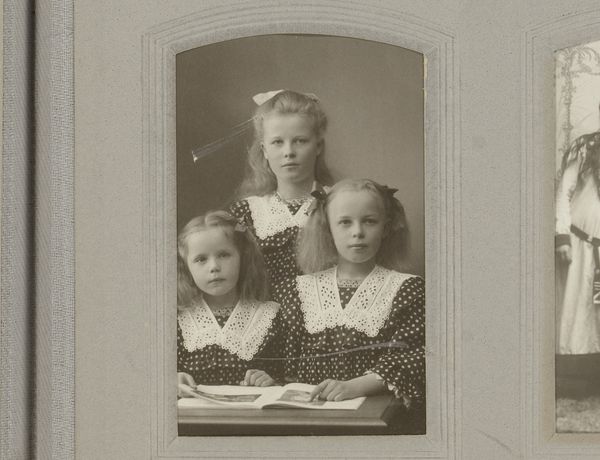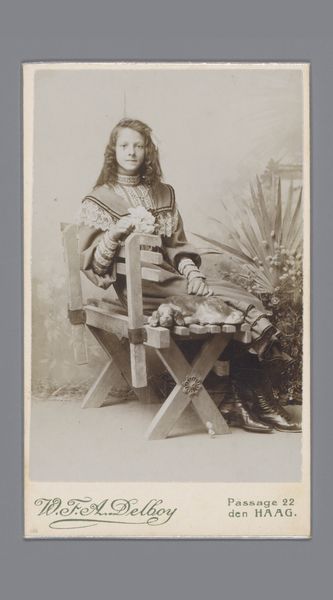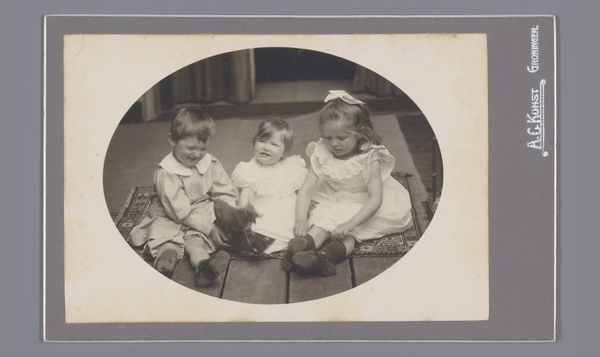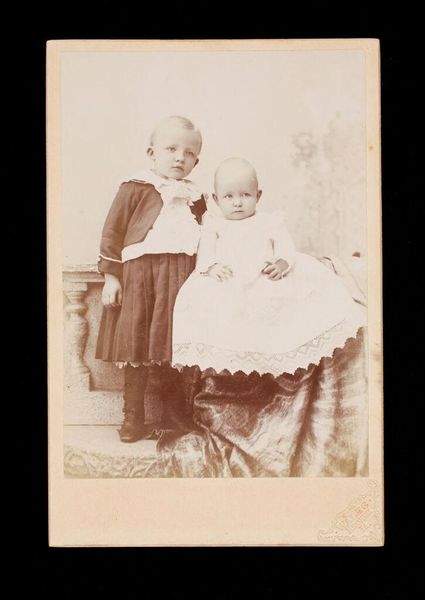
Groepsportret van acht en een halve maand oude baby Klaas Kleiterp en Corrie en Els Bakker in Batavia 1921
0:00
0:00
photography, gelatin-silver-print
#
portrait
#
still-life-photography
#
archive photography
#
photography
#
historical fashion
#
child
#
group-portraits
#
gelatin-silver-print
#
genre-painting
Dimensions: height 110 mm, width 67 mm
Copyright: Rijks Museum: Open Domain
Curator: Ah, here we have a gelatin silver print dating back to 1921, entitled "Groepsportret van acht en een halve maand oude baby Klaas Kleiterp en Corrie en Els Bakker in Batavia." Quite a mouthful, isn't it? Editor: It’s utterly captivating. There's something profoundly touching in its simplicity and its directness—a hushed stillness like a memory you’re afraid to disturb. It’s melancholic but not desperately so. Curator: I can see that. The muted tones and rather formal composition evoke a sense of history. There’s something inherently symbolic in this trio. The two elder children flank and protect the baby, yes? Editor: Precisely! They represent guardianship, or perhaps initiation. The baby’s expression—so guileless—is echoed by the elders, creating a visual story of the passage of innocence to, perhaps, guarded maturity. I wonder about the braid and the bows. Curator: They are wearing a pigtail style with decorative checkered ribbons at the base. Perhaps indicators of the time. The uniformity of their clothing, that crisp white linen, against their youthful faces amplifies that symbolic read. It is intriguing the picture almost tells a story, or freezes a particular moment in time. Editor: And Batavia, now Jakarta – such a confluence of cultural and colonial dynamics! The white outfits carry an implication, no? European settlers trying to maintain something pure despite displacement. It is also possible they all posed in borrowed apparel and were only together briefly. Curator: That reading does strike a cord, that it does reveal social anxieties of that time. It has me wondering though, what visual clues might lead us to the subjects being privileged colonizers vs visitors of limited time. If the outfits were the same color, pattern or general cut it may hint more so that the family are longer-term occupants or permanent residents rather than occasional. Editor: Food for thought indeed! To come full circle I also find the monochrome palette a study in grace. It directs all your awareness into shapes, postures and light. I will miss this one now that our chat is ending, honestly. Curator: Likewise. I am reminded how portraits—particularly from times past—are not just records of appearance but open doors to a world of feeling and meaning, ready to reveal their stories to us.
Comments
No comments
Be the first to comment and join the conversation on the ultimate creative platform.

